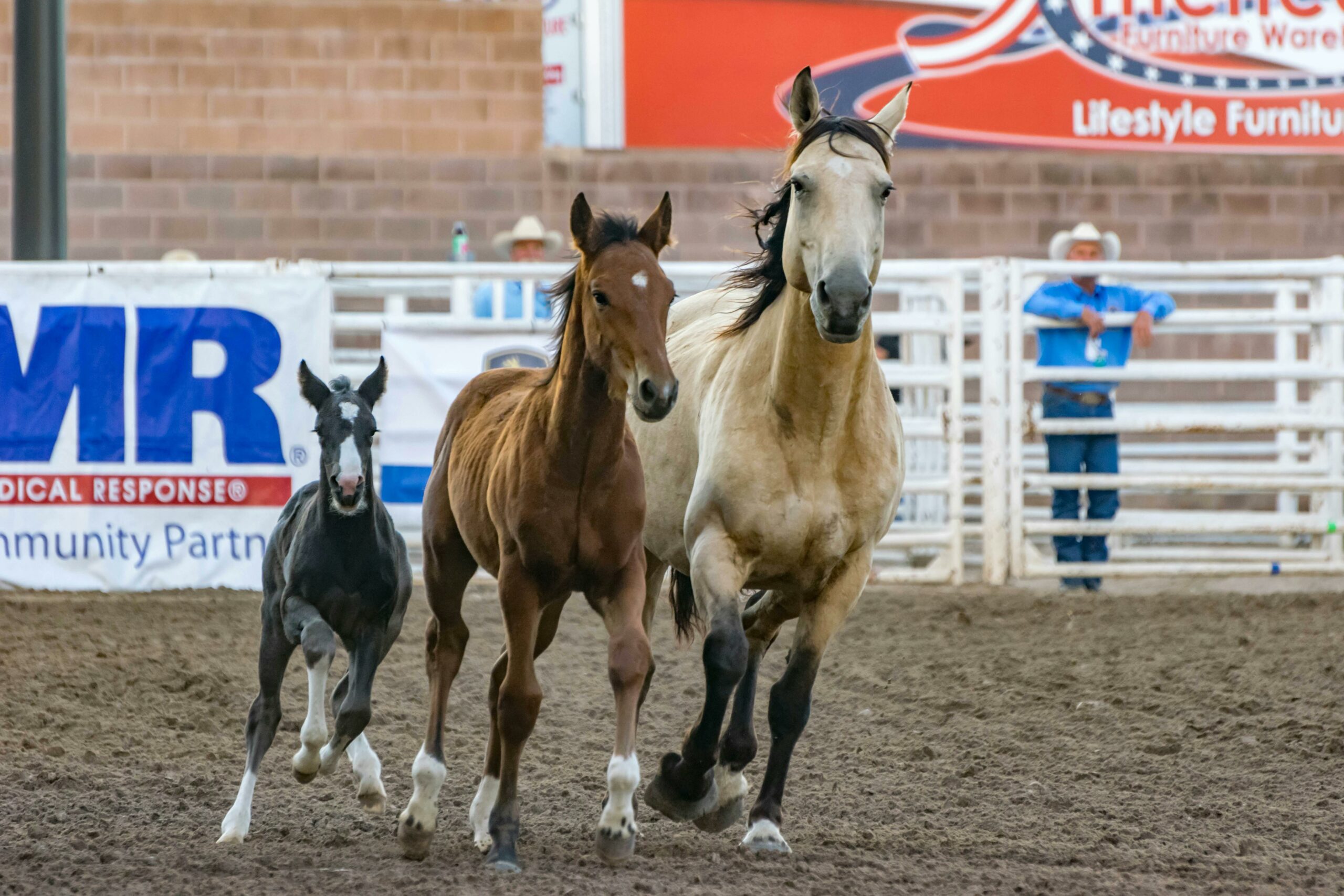Understanding the U.S. population by race is crucial for grasping the rich tapestry of diversity that makes up the United States. Did you know that the latest demographic statistics reveal significant shifts in the racial composition of the nation? Many people often wonder, what does the racial breakdown look like? The pie chart representation of this data not only provides a visual insight but also sparks discussions about identity, culture, and community. As America continues to evolve, the racial demographics are changing, making it vital to pay attention to these trends. Are you curious about how these statistics impact social dynamics and economic opportunities? Delving into the U.S. race demographics will uncover fascinating insights that could reshape your understanding of society. Whether you’re a student, researcher, or just someone interested in knowing more about the racial makeup of the U.S., this information is indispensable. In this post, we will explore the latest statistics, trends, and implications of the racial composition in America, providing you with a comprehensive overview that engages and informs. So, let’s dive in and unravel the complexities behind the numbers!
Unveiling the 2023 U.S. Population by Race: What the Latest Pie Chart Reveals About Diversity Trends
When you’re looking at the U.S. population by race pie chart, you might think it’s just another boring statistic, right? But let’s be real here for a second. This stuff actually tells us a lot about who we are as a nation. So, let’s break it down, shall we?
First off, the racial demographics in the United States has changed a ton over the years. Like, if you look back at the census data from the past, you’ll be like, “Whoa, what happened?” In 2020, the pie chart showed that White Americans made up about 57.8% of the population, while Hispanic and Latino people accounted for 18.9%. That’s a pretty big slice of the pie, if you ask me. But, I mean, it ain’t just about the numbers, right?
Now, let’s not forget about the Black or African American population, which was around 12.1%. That’s like… a significant piece of the pie, too. Then there’s Asian Americans, making up about 5.9% of the total population. And don’t get me started on the multiracial folks, who were clocking in at about 2.8%. Like, talk about diversity, am I right?
If you’re a visual person, you might wanna check out a U.S. population by race pie chart. It’s colorful, and honestly, much more interesting than reading a bunch of numbers. You got your big slices and your little slices. It’s like a pizza party, only instead of pepperoni and mushrooms, we got different races and ethnicities.
Here’s a quick breakdown of how it looks:
| Race/Ethnicity | Percentage |
|---|---|
| White | 57.8% |
| Hispanic or Latino | 18.9% |
| Black or African American | 12.1% |
| Asian | 5.9% |
| Two or More Races | 2.8% |
| Other | 2.5% |
So, looking at this table, you might think that’s a pretty diverse mix. But I can’t help but feel like we’re missing something here. Maybe it’s just me, but I feel like the U.S. population by race isn’t reflected properly in the media, ya know? It’s like they focus on the big players and forget about the rest. Can we get some love for the smaller slices? Seriously, though.
Now, if you wanna get all technical about it, the U.S. population demographics have been shifting due to factors like immigration, birth rates, and, let’s face it, people just moving around. It’s not really a surprise that the racial makeup of the U.S. is changing, but I wonder how many folks actually pay attention to it? Like, do people even know what these percentages mean in real life?
Here’s another thing to chew on. The racial diversity in the U.S. varies from state to state. For instance, California and Texas have a much higher Hispanic population compared to, say, Vermont. It’s kinda wild when you think about it. Different states feel like different countries sometimes.
And then there’s the question of how all this affects everything from politics to culture. Like, do you think the pie chart influences voting patterns? Maybe. Not really sure why this matters, but it could play a role in shaping policies and how we view each other.
If you’re curious about the future, projections suggest that the U.S. population by race will continue to evolve. By 2045, some experts say that the White population might dip below 50%. That’s gonna be a major shift, folks. I mean, imagine seeing a pie chart where the largest slice is something other than white. Wild, right?
Now, let’s talk about the implications of these stats. Companies and brands are waking up, realizing they can’t ignore this anymore. Like, who are they marketing to if they keep showing just one demographic? Not ideal. They’re gonna have to step it up and start representing everybody.
To wrap it up—well, sorta—I just wanna say that the U.S. racial demographics are more than numbers. They’re stories, histories, and identities. It’s messy and complicated, just like life itself. So next time you see that U.S. population by race pie chart, think about what it really means. It’s not just a pie; it’s a reflection of who we all are in this great melting pot. Or should I say, salad bowl? Either way, it’s a lot to digest.
Surprising Insights From the U.S. Race Demographics Pie Chart: Are We More Diverse Than Ever?
So, let’s dive into the whole U.S. population by race pie chart thing, shall we? Honestly, I’m not really sure why this matters, but it’s one of those topics that gets people talking, ya know? The pie chart shows how diverse the U.S. is, and it’s a real eye-opener when ya look at it. It’s not just numbers, but it’s real life, real people. But, like, what does it all mean?
First off, if you look at the pie chart, you’ll notice that the largest slice belongs to White folks, who make up about 60% of the population. That’s like, a pretty big piece of pie, right? But, maybe it’s just me, I feel like we should be talking about the other slices too. You got the Hispanic or Latino slice, which is about 18% and then the Black or African American slice at around 13%. And let’s not forget the Asian slice, which sits at about 6%. There’s also a small sliver for Native Americans and Pacific Islanders, which is not even 2%.
Here’s a little breakdown of the U.S. population by race in a super simplified table:
| Race | Percentage of Population |
|---|---|
| White (Non-Hispanic) | 60% |
| Hispanic or Latino | 18% |
| Black or African American | 13% |
| Asian | 6% |
| Native American | 1% |
| Pacific Islander | 0.2% |
| Two or More Races | 3% |
So, what’s up with those numbers? It’s kind of wild to think that the U.S. is really a melting pot, but then again, we still got issues with racism and segregation, which is kinda ironic if ya think about it. Like, how can we be a melting pot when there’s still so much division?
Now, if you look closer at the U.S. population by race pie chart, you might notice some interesting trends. For example, the Hispanic or Latino population is growing faster than any other. I mean, it’s like they’re taking over, but in a good way, right? More culture, more food, more everything – who wouldn’t want that? But some folks might be scratching their heads, thinking, “Why is this happening?” Maybe it’s just me, but it seems like a lot of people are moving around and changing neighborhoods.
Also, let’s talk about the younger generation. They’re way more diverse than their parents and grandparents. Kids nowadays don’t even blink twice at seeing friends from different races. It’s like, “Oh, you’re Asian? Cool, I got a buddy who’s Black, and another one who’s Hispanic.” It’s like a real-life version of that pie chart! But, on the flip side, older generations sometimes struggle with this kind of diversity. It’s like they’re stuck in their ways, and that’s where the tension comes from.
Now, if you’re thinkin’ about how these numbers affect politics, you might wanna sit down for this. Politicians are totally aware of these demographics. They know that to win elections, they gotta appeal to everyone. Not just the big slice of White people, but also to the Hispanic, Black, and Asian communities. It’s like, “Hey, if I want that slice of pie, I better start sharing some of my own, right?”
But here’s the thing, demographic changes aren’t just about the pie chart. It’s also about the stories behind those numbers. Each slice represents real people with dreams, fears, and aspirations. Like, take the Black community for instance. They have such a rich history in this country but still face challenges that are hard to ignore. Not to mention the Asian community, which has been through so much recently.
And let’s throw in a little insight here. The U.S. population by race pie chart doesn’t just help businesses decide where to market their products. It’s also crucial for hospitals and schools. Ya know, understanding the racial makeup can help in providing better services.
Here’s a quick list of practical insights based on the U.S. population by race pie chart:
- Businesses can tailor their marketing strategies to reach diverse audiences.
- Schools can implement programs that promote inclusivity and understanding.
- Healthcare providers can offer better services that cater to the needs of different communities.
- Politicians can craft policies that address the unique challenges faced by various racial groups.
So, maybe the pie chart is more important than it seems at first glance. It’s not just about numbers and percentages; it’s about real-life implications. And while it may seem like just another statistic, it actually reflects the
The Changing Face of America: Key Statistics from the 2023 U.S. Population by Race Pie Chart
The U.S. population by race pie chart is kind of a big deal, or at least that’s what some folks say. It’s like, if you wanna understand who lives where and why it is important to know this stuff, you gotta look at these charts. So, let’s dive into this whole colorful pie of numbers and percentages, shall we?
First off, this pie chart shows the racial diversity in the U.S. and it’s kinda interesting. The largest slice of the pie, which is sorta like the biggest piece of cake at a birthday party, is white people. I mean, like, around 60% or so. Not really sure why this matters, but it’s a big chunk of the population. Then you got your Hispanic or Latino folks, making up about 18%, which is like the second biggest slice. They’re like the chocolate frosting on that birthday cake, sweetening things up a bit, you know?
Here’s a little breakdown of the U.S. population by race pie chart, just to make it easier to wrap your head around:
| Race/Ethnicity | Percentage (%) |
|---|---|
| White (Non-Hispanic) | 60 |
| Hispanic or Latino | 18 |
| Black or African American | 13 |
| Asian | 6 |
| Native American | 2 |
| Two or More Races | 3 |
So, looking at this table, you can see the representation of each group. The U.S. population by race pie chart really highlights how diverse our country is. And, like, I get it, diversity is a good thing, but sometimes I wonder if people actually pay attention to these numbers. Maybe it’s just me, but I feel like sometimes we’re too busy scrolling through social media to notice what’s happening in the real world.
Now, let’s not forget about the Asian population, which is around 6%. They’re sort of like the sprinkles on top of that cake — small but colorful and important, right? They bring a lot of cultural richness, but somehow, people still think they’re a minority that’s not really there. It’s funny, in a not-so-funny way.
And then there’s the Native American population, which is only about 2%. It’s like, come on, people, that’s not a lot! They were here first, and yet, they’re like the tiny crumbs left on the plate after everyone has gobbled their piece of cake. That just doesn’t seem fair, does it?
Now, if you were to look at the U.S. population by race pie chart, you’d also see a segment for folks who identify as being of two or more races. That’s about 3%. This group is growing, which is kind of cool, I guess? Maybe it means people are becoming more open-minded and mixing things up. Like, instead of just vanilla or chocolate, we’re now getting mint chip and cookie dough too.
But here’s the kicker: a lot of people don’t even know these stats. I mean, I was talking to a friend the other day and they had no clue about the U.S. population by race pie chart. It’s like, how can you not know this? It’s kinda important stuff, right? Maybe it’s just the bubble we live in, but you would think people would be more aware.
Here’s a fun fact: the population dynamics are always changing. It’s like a game of musical chairs, where every decade the music stops and people have to figure out where they fit in. The census, which is a big deal every ten years, is the main event that gives us these numbers. And let’s be real, it’s not the most exciting thing to think about, but it’s crucial for planning and resources distribution.
So, what’s the deal with all this info? Well, understanding the U.S. population by race pie chart helps in everything from politics to education. Schools and districts use this data for funding, and politicians? They love to play to the biggest audience, which is, you know, kind of shady but also smart in a way.
In a nutshell, these pie charts are more than just pretty pictures. They’re a reflection of our society. And while it may feel like just numbers on a page, they represent real people with real stories. But don’t take my word for it; go ahead and take a look at those colorful slices yourself. You might find it more interesting than you think, or maybe not. Either way, it’s a good conversation starter at parties, right?
How the U.S. Population by Race Pie Chart Reflects Shifting Social Dynamics: What You Need to Know
Alright, so let’s dive into this whole U.S. population by race pie chart thing, shall we? It’s kinda a big deal, but honestly, not really sure why this matters, but hey, knowledge is power, right? I mean, if you’re into that kinda stuff. Anyway, the latest data, which is from the Census Bureau, shows how the population breaks down. And spoiler alert: it ain’t as simple as you might think.
First off, let’s talk about the U.S. population by race pie chart itself. You got your big slices, right? Like, if you look at it, you might see that white folks make up the largest chunk. We’re talking about around 60% or so of the population. Kinda makes you wonder about diversity, huh? Like, where’s everybody else at? Maybe it’s just me, but I feel like that’s a lot of pressure on one race to carry the entire population.
Now, here’s a fun little breakdown for ya:
| Race | Percentage of Population |
|---|---|
| White | 60% |
| Hispanic or Latino | 18% |
| Black or African American | 13% |
| Asian | 6% |
| Native American | 1% |
| Two or More Races | 3% |
So, if you look at the pie chart, it really gives you a visual sense of this whole situation. You see the big white slice, and then all the other colors kinda feel like an afterthought. Like, “Oh yeah, we should probably include the others too!” I dunno, maybe I’m just reading too much into it.
Then, we have the Hispanic or Latino slice, which is growing. Like, it’s around 18% now, and that’s a pretty significant jump from what it used to be. Some people are all like “Wow, that’s great!” but others are scratching their heads wondering what that means for the future. I guess it’s a mixed bag of feelings. It’s like, “Do we celebrate it or what?”
Now, let’s not forget the Black or African American population, which hangs around 13%. It’s a slice that’s been steady for a while. But, you know, there’s always debates about why that number isn’t changing more. Maybe it’s because of systemic issues or maybe it’s just how things are. Not really sure, but it could be worth pondering, ya know?
And don’t even get me started on the Asian population. Six percent. Just six. It’s like a tiny sliver of the pie, and it makes you think, “Where are all the Asian people at?” I mean, there are tons of folks, but they just aren’t represented in the same way. It’s like, “Hello? We exist too!” I dunno, maybe they’re just too busy doing cool stuff to fill out census forms or something.
Also, the Native American slice is super tiny at just 1%. I mean, that’s kinda sad, right? Like, this is a group that’s been here forever, and they’re barely a blip on the radar. It’s like the pie chart didn’t even bother to give them a decent slice. Makes ya think about all those historical injustices, huh? But whatever, let’s just keep munching on our pie and ignoring the deeper issues.
Now, the Two or More Races category is interesting too. At 3%, it’s a sign that people are mixing it up more than ever before. I mean, that’s kinda cool, right? It’s like blending flavors in ice cream—why limit yourself to just one when you can have a swirl? But then again, some folks are like, “What does that even mean? Are they just confused?” It’s a whole philosophical debate waiting to happen, and who has time for that?
When you pie all these stats together, it feels like a snapshot of America, but it’s also a snapshot that’s kinda blurry. Like, sure, the data is there, but how many people actually feel represented by it? You got all these groups, but are they really heard? Maybe that’s the million-dollar question.
Let’s throw in some practical insights while we’re at it. If you’re a marketer, understanding the U.S. population by race pie chart can help with targeting your audience. Like, if you’re selling tacos, you might want to focus more on the Hispanic community. Makes sense, right? Or if you’re pushing a new hip-hop album, the African American demographic might be your goldmine.
So, in some ways, this pie chart is more than just numbers. It’s about understanding society, culture, and, of course, marketing
Exploring Racial Diversity in the U.S.: Eye-Opening Data from the Latest Population Pie Chart
When you take a gander at the U.S. population by race pie chart, it’s kinda wild to see how diverse this country is, right? I mean, you’ve got all sorts of people mixed in, like a big ol’ melting pot or something. The numbers are like a chaotic dance, and sometimes I wonder if anyone really pays attention to them. Not really sure why this matters, but it does paint a picture of who lives in America, I guess.
To break it down a bit, let’s talk about the main races represented in the U.S. population by race pie chart. You’ve got your White folks, which make up a big chunk, about 76% of the total population. Then there’s the Black or African American population, which sits at around 13%. And let’s not forget about the Hispanic or Latino population, which is about 18%. I mean, that’s a lot of tacos and salsa, am I right? But then again, I’m just trying to get a laugh here.
Now, if we dig a little deeper, we might find that Asian Americans make up about 6%. And then there’s the Native American and Pacific Islander crowd, who are, like, 2% or something. Honestly, these numbers can get a bit confusing, especially with all the different categories. It’s like trying to figure out who’s who at a family reunion where nobody’s really sure who’s related to who.
Here’s a quick table that breaks it down for ya:
| Race/Ethnicity | Percentage of U.S. Population |
|---|---|
| White | 76% |
| Black or African American | 13% |
| Hispanic or Latino | 18% |
| Asian American | 6% |
| Native American | 1.3% |
| Pacific Islander | 0.2% |
| Two or more races | 3% |
It looks all neat and tidy, but let’s be real, these are just numbers. They don’t capture the whole story, you know? Maybe it’s just me, but I feel like there’s a lot more to people than just what race they check off on a form. Like, what about their experiences? Their cultures? Their favorite pizza toppings? I mean, that stuff matters too!
So, if you squint at the U.S. population by race pie chart, you might notice that it’s not just about numbers. It’s about people living their lives, trying to make sense of all this craziness. You can see where diversity shines, but also where it gets a bit murky.
Now, let’s throw in some extra insights for ya. Did you know that the U.S. population by race pie chart has changed over the years? Back in 2000, the White non-Hispanic population was around 69%. And now it’s grown to 76%. The Hispanic population has also exploded, it went from 12% to around 18%. Like, whoa, that’s a big jump!
And speaking of jumps, let’s not forget about the youth. The younger crowd is a whole lot more diverse than the older folks. So, when you think about the future of the U.S., it’s gonna look a whole lot different. Maybe more tacos and less meatloaf? Who knows!
Here’s a fun fact: In 2020, the Census Bureau noted that people identifying as two or more races has also increased. Like, what does that even mean? It’s like a new category for folks who don’t fit neatly into one box. Good for them, I guess.
Now, if you wanna see the U.S. population by race pie chart for yourself, you can easily whip out your phone and Google it. But beware, it can be a rabbit hole of data. You start with one chart, and before you know it, you’re knee-deep in stats about everything from income levels to education. It’s like a trivia night gone rogue.
Also, keep in mind that these numbers can vary depending on who’s counting. The Census is one thing, but other surveys might show different results. So, if you hear someone quoting stats, take it with a grain of salt. I mean, it’s all relative, right?
If you’re interested in diving deeper, local demographics can vary wildly from state to state. For instance, California has a whole different vibe compared to Mississippi when it comes to the U.S. population by race pie chart. It’s like comparing apples to oranges, or I dunno, maybe even apples to kumquats. It’s all fruit, but it’s super different!
In the end, whether you care about the U.S. population by race pie chart or
Conclusion
In conclusion, the U.S. population by race pie chart offers a compelling snapshot of the nation’s demographic landscape, highlighting the diversity that defines America today. With significant representations from various racial and ethnic groups, including White, Black or African American, Asian, Hispanic or Latino, and others, this chart underscores the evolving nature of our society. As we navigate the complexities of race and identity, understanding these demographics is crucial for fostering inclusivity and encouraging dialogue around equity and representation. By recognizing the contributions and experiences of all racial groups, we can work towards a more unified community. We encourage readers to delve deeper into these statistics, engage in conversations about race, and actively participate in initiatives that promote diversity and inclusion in their local communities. Remember, our differences are our strengths, and embracing them is key to a brighter, more harmonious future.










